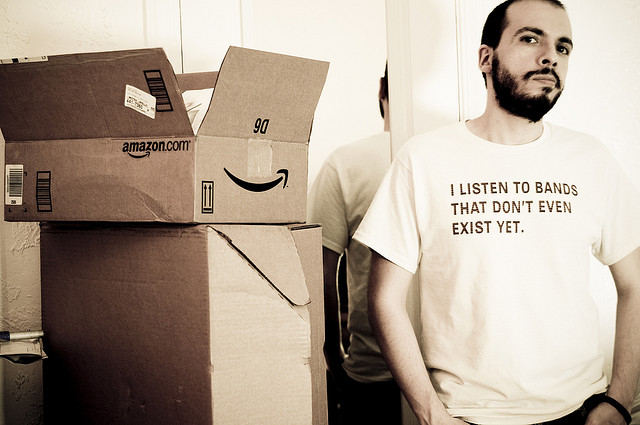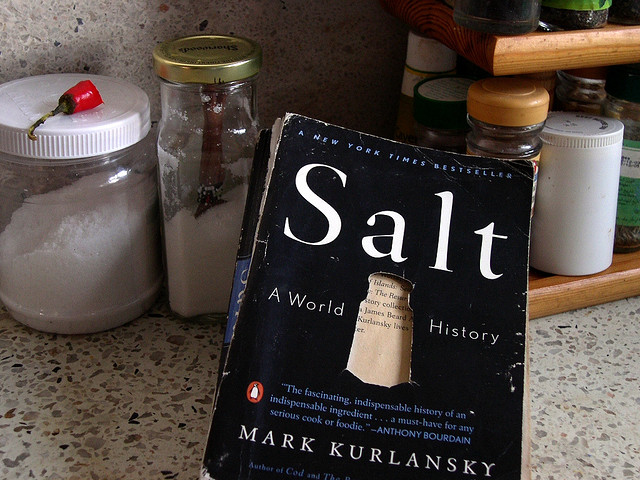Unlock the Magic in Your Story Now
Get the Free 20 questions to Ask Before Launching Your Idea workbook when you sign up for occasional updates.
Get the Free 20 questions to Ask Before Launching Your Idea workbook when you sign up for occasional updates.
Articles filed in: Storytelling
What If You Had One Line To Tell The Truth About Your Product?
filed in Marketing, Storytelling
 Imagine you have a giant billboard to tell your customers the truth about your product or service.
Imagine you have a giant billboard to tell your customers the truth about your product or service.
You’ve got just one line to do it in.
What would your truth look and sound like?
Is the truth in that single sentence what you want it to be?
If not, what do you need to do in order to rewrite it?
[It probably doesn’t involve buying a billboard.]
What Don’t You Do?
filed in Marketing, Storytelling, Strategy
 You are challenged at least ten times every day to explain to people what you do and why you do it. This happens on your about page, at networking events and even as you sit next to someone ten thousand feet up on a transatlantic flight.
You are challenged at least ten times every day to explain to people what you do and why you do it. This happens on your about page, at networking events and even as you sit next to someone ten thousand feet up on a transatlantic flight.
A great place to start is by unapologetically telling people what you don’t do.
“We’re not cheap….”
“You won’t find that here….”
“Our best work takes time….”
One of the best examples I’ve seen of this comes from The Mill Gym here is Perth which only admits a hundred members.
“The Mill is a basic facility with all the tools we need. It is purposely designed this way for a number of reasons. One of those reasons is to sort out the pretenders from the realists. There is no time to look at yourself in the mirror, because we have no mirrors. There is no time to stop and watch TV, because we have no TVs. Nor will you find any other distractions here.”
Being really clear about what you don’t do enables you to tell potential customers what you excel at and why. But most important of all, it helps you to attract the right customers to your business and to softly close the door on people who are not a great fit for you.
Now you have more time and space to really connect with the people you want to serve.
The same rule applies whether you’re training a tiny group of hardcore athletes or building a
global yoga community.
So tell me, what don’t you do?
Image by Wally Gobetz.
Thinking About Your Assets
filed in Entrepreneurship, Storytelling, Strategy
 Take a blank page. Draw a line down the centre. On one side list your tangible assets, things like stock, equipment, products and your website.
Take a blank page. Draw a line down the centre. On one side list your tangible assets, things like stock, equipment, products and your website.
On the other side make a list of your intangible assets, stuff like intellectual property, trademarks, brand names, the skills of your team, your customer database, reputation and the trust you have built over time.
Now one by one cross off the things that your competitors can easily replicate or acquire, on both sides of the list.
TANGIBLE ASSETS
Stock
Website
Equipment
Cash Balances
Product Lines
Property
INTANGIBLE ASSETS
Brand name
Logos
Trademarks
Patents
Formulas
Customer Database
Skills
Reputation
Customer Loyalty
Trust
What are you left with?
As we build our businesses, we often work hardest on the things that are replaceable, believing that our advantage is in the tangible value we provide and can demonstrate. The cup of coffee brewed, the line of perfect code written. But in a world where there are six cafés on every street and 200,000 programmers for hire on Elance in two clicks of a mouse we need to think more deeply about what really matters to our customers and clients. People place a premium on the things that you can never hand them over the counter (real or virtual). It turns out that trust is the scarcest resource we have.
If you want to build a truly great business put your energy into the things that can’t be crossed off the list.
Image by Death to Stock.
5 Things Your Brand Name Must Do
filed in Marketing, Storytelling, Strategy
 Brand naming is tough. There are so many variables to consider and the finality of saying ‘that’s it’, feels like a huge decision. Your name is probably the first encounter a potential customer will have with your business. A brand name has to stand the test of time and wear a lot of hats.
Brand naming is tough. There are so many variables to consider and the finality of saying ‘that’s it’, feels like a huge decision. Your name is probably the first encounter a potential customer will have with your business. A brand name has to stand the test of time and wear a lot of hats.
5 Things your brand name must do
1. Make the right people curious to know more about your story.
A great brand name is your opening move, your chance to hold people for a second longer and then to keep the conversation going. Does it speak to the people you hope will become your customers? People have been so curious about how the Warby Parker name came to be that the name itself has become a story. It’s been more than just a label for their products, the company name is an asset to the business.
2. Tell people something about who you are and what you stand for.
People will attach meaning in an instant. Is your company imaginative, ambitious, caring or forward thinking?
What does Apple say that Microsoft doesn’t? Your name needs to connect with people. How does yours signal your intention for your business?
3. Be easy to say, share, spell and pass along.
Err….how do you pronounce that again?
4. Be legal.
You don’t want to build your brand only to find you’ve stepped on the intellectual property toes of another company. Check trademark records, business name registers and if in doubt get the help of a lawyer who will do the checks for you.
5. Have domain name and social media username availability.
The .com debate rages on. Startups find great workarounds with .co, .cc, .io, .is domain extensions and by adding prefixes like the words ‘meet’ and ‘get’. Check social media username availability at NameChk.
This tool saves my life daily when I’m developing brand names for clients.
There is one thing your brand name shouldn’t do and that’s prevent you from starting. I’ve seen it time and time again. People get stuck trying to find the perfect name, so stuck that this holds their project up for months—sometimes forever. An idea that’s out there making an impact in the world is better than perfection.
Image by Deiby.
30 Questions Every Startup And Entrepreneur Should Answer
filed in Entrepreneurship, Storytelling, Strategy
 We’ve become really good at looking for answers. So good in fact, that we get close to asking
We’ve become really good at looking for answers. So good in fact, that we get close to asking
a billion questions every day in Google search.
And yet as busy business owners and idea creators, we struggle to find time to ask really important questions of ourselves. Here then, are questions worth taking the time to answer.
30 Questions for every startup and entrepreneur
1. Why are we doing this?
2. Why are we the people to do it?
3. Why is now the time to start?
4. What will happen because this idea exists?
5. How will this change how people feel about x?
6. Who is it for?
7. Why will they care?
8. What do the people we hope to serve want?
9. What do they believe?
10.How do they feel about the problem we solve?
11.What do they do—where, when, why and with whom?
12.What will customers say to their friends to recommend this product or service?
13.How can we make customers feel good because they recommend it?
14.What are we really selling beyond the utility of the product or service?
15.How can we add more value?
16.What happens because our business or project exists?
17.How will people find us?
18.Where are they already looking, or not looking?
19.What’s our greatest strength?
20.What weakness might get in the way if we don’t address it?
21.What does success look like, today, this year, next and five years from now?
22.What do we value?
23.What do we want to change?
24.What promises do we want to make and keep?
25.What matters most right now?
26.What’s going to matter more three, six or eighteen months from now?
27.What’s our difference?
28.What do we need to do today, to make sure that we can keep doing the things we want to do tomorrow?
29.If we could do anything today would this be it?
30.If not this then what?
When you know what you want, where you’re headed and why almost nothing can stop you.
Image by Darkwood67.
Significance Could Be Your Competitive Advantage
filed in Marketing, Storytelling, Strategy
 You’re late for an appointment and in your rush to get out the door you forget to put everything into your bag.
You’re late for an appointment and in your rush to get out the door you forget to put everything into your bag.
QUESTION
Which would you rather FORGET to bring with you, your wallet or your phone?
2006 ANSWER
PHONE.
2014 ANSWER
WALLET.
A competitive advantage isn’t always as tangible as the patents you file, or processes you put in place.
So don’t just set out to create a better product. Set out to change the meaning people will one day attach to it.
Image by Garnet.
 When I was a little girl buying new shoes was always an event. We went to a local shoe shop, the one that advertised the credentials of their ‘specially trained fitters’ in the window. We patiently waited our turn for the magic that was about to happen. This usually involved a matronly woman and what was essentially a metal ruler in the crude shape of a shoe. The green plastic strap that she threaded around your instep to measure the width of your foot was important of course. This was science and not art, after all.
When I was a little girl buying new shoes was always an event. We went to a local shoe shop, the one that advertised the credentials of their ‘specially trained fitters’ in the window. We patiently waited our turn for the magic that was about to happen. This usually involved a matronly woman and what was essentially a metal ruler in the crude shape of a shoe. The green plastic strap that she threaded around your instep to measure the width of your foot was important of course. This was science and not art, after all.  If you’ve ever doubted that we are, as Jill Bolte Taylor says, “feeling creatures who think” just stop in the salt section of your local supermarket. Salt is as close to free as any product can get. You can buy a kilo for a dollar, or a Pink Himalayan variety for sixty times that price.
If you’ve ever doubted that we are, as Jill Bolte Taylor says, “feeling creatures who think” just stop in the salt section of your local supermarket. Salt is as close to free as any product can get. You can buy a kilo for a dollar, or a Pink Himalayan variety for sixty times that price. It’s 9pm on Sunday night and a line of eager customers with cash in hand snakes down Victoria Street and around the corner. Not one customer who joins is surprised by the line and nobody gives up and leaves it. The effort it seems is clearly worth the reward.
It’s 9pm on Sunday night and a line of eager customers with cash in hand snakes down Victoria Street and around the corner. Not one customer who joins is surprised by the line and nobody gives up and leaves it. The effort it seems is clearly worth the reward. …..they shop to dream. They don’t want stuff. They want to imagine a better version of themselves.
…..they shop to dream. They don’t want stuff. They want to imagine a better version of themselves.